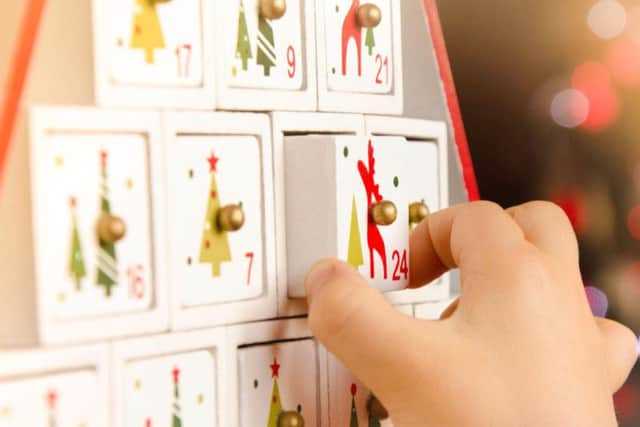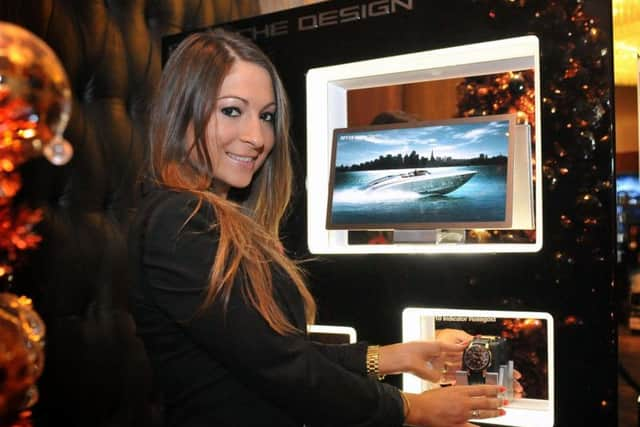From Nazi Germany to Harrods - how the Advent Calendar has grown from humble beginnings to become a Christmas favourite
Now Christmas constants, they’ve navigated politics, religious rituals, and date discrepancies during their rise to top.
Here’s how the humble Advent calendar came to be, from ancient Christian liturgy, to the near-infinite varieties on modern shelves. From the latin adventus (meaning ‘coming’ or ‘arrival’),
Advertisement
Hide AdAdvertisement
Hide AdAdvent consists of four weeks of preparation for the celebration of the nativity. No one quite knows when it was first observed, but monks in 5th century France are known to have begun fasting in the lead-up Christmas.


As Christianity spread, so did Advent. A host of items predate the Advent calendar, including Advent wreaths, Advent crowns, and Advent candles. All are still in sporadic use, but since none of them dispense chocolate, mainstream appeal has waned.
Archbishop of York Dr John Sentamu on faith, Advent and his love for the people of YorkshireTraditionally, Advent candles are lit inside an Advent wreath - wrought with evergreen plants like holly and ivy. Fortunately for fire departments, this custom is rarely observed.
Though ostensibly concerned with time-keeping, Advent calendars were extremely late to the party. More than a millennium separates the emergence of Advent from the calendars that keep track of it, and it wasn’t until the 19th century that the idea really took hold.
Advertisement
Hide AdAdvertisement
Hide AdAs with so many festive traditions, the calendar has Germanic roots. German Lutherans began counting down the days ‘til Christmas by lighting a candle every evening, or chalking off dates on a blackboard.


In 1908 a Bavarian named Gerhard Lang designed the first commercial calendar, a small card with a pack of pictures that could be glued on each day. He went bust between the wars – his so-called ‘Munich calendars’ did not sell well abroad – and the Nazis put a stop to the practice with a mix of misery and cardboard rationing.
After the war, the mantle was picked up by one Richard Sellmer of Stuttgart, whose calendar-making company still produces more than a million units a year in 25 different countries. He initially set his sights on the American market, obtained a US patent in 1953, and was so successful that he was nicknamed “the General Secretary of Father Christmas”.
Advent calendars became popular extremely quickly, but it wasn’t until 1958 the most crucial ingredient was first added – chocolate – and for obvious reasons, the edible aspect went down well.
Advertisement
Hide AdAdvertisement
Hide AdIn 1958, it was chocolate; but in 2019, all bets are off. Food-based calendars remain popular, from jelly beans to curry recipes, and, inevitably, bottles of Prosecco.
Gym bunnies might appreciate the Protein Ball calendar, while calmer souls may prefer the Pukka Herbal Tea variety. For something completely off-the-wall, consider the Snaffling Pig Pork Crackling Calendar.
The smartphone revolution brought with it a new breed of digital calendar, which begins each day with a new image or recording, while ‘beauty’ calendars stocking grooming products have become especially a la mode.
Style Clinic: The Top 10 Christmas beauty advent calendarsIn 2010, Porsche unveiled a bespoke, $1 million advent calendar in Harrods, London, with daily goodies such as a chronograph watch, a pair of 18ct gold sunglasses, and a motorised yacht.
Advertisement
Hide AdAdvertisement
Hide AdIt wasn’t even the most expensive calendar of that year; that honour went to the $2.68 million (excluding VAT) offering from Belgian company Octagon Blue GCV, packed with 24 intricately carved diamonds.
Far and away a favourite, however, hails from the German town of Gengenbach, on the outskirts of the Black Forest. Built around a grand 18th century town hall, that just happens to have 24 forward-facing windows, every December the main square transforms into what residents claim is the largest Advent calendar in the world.